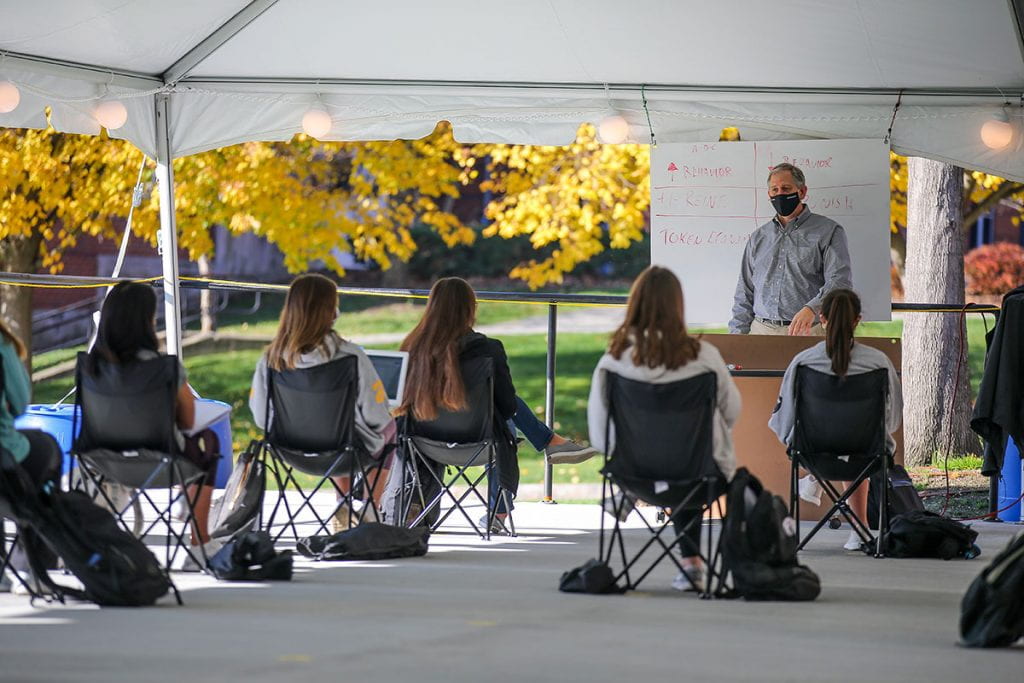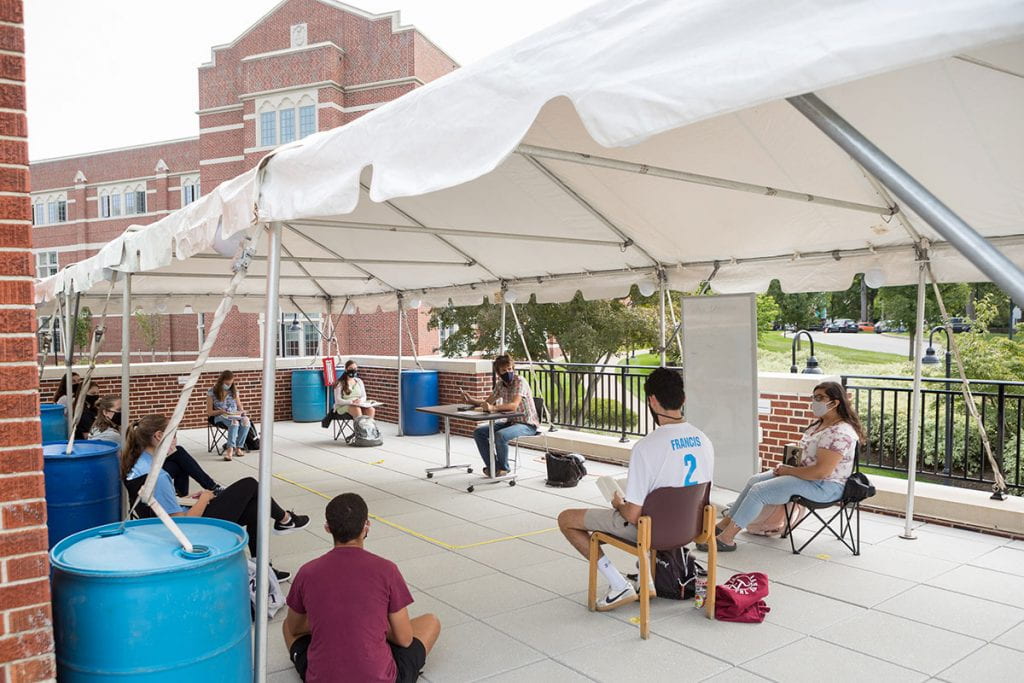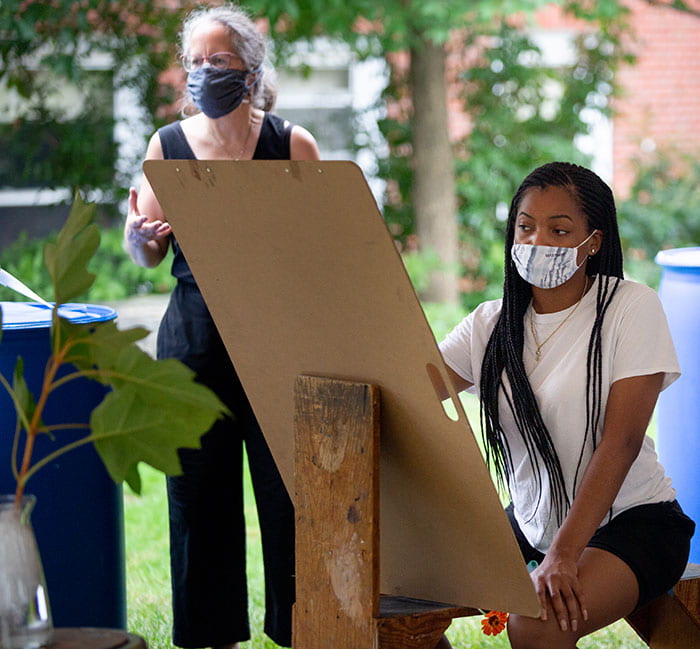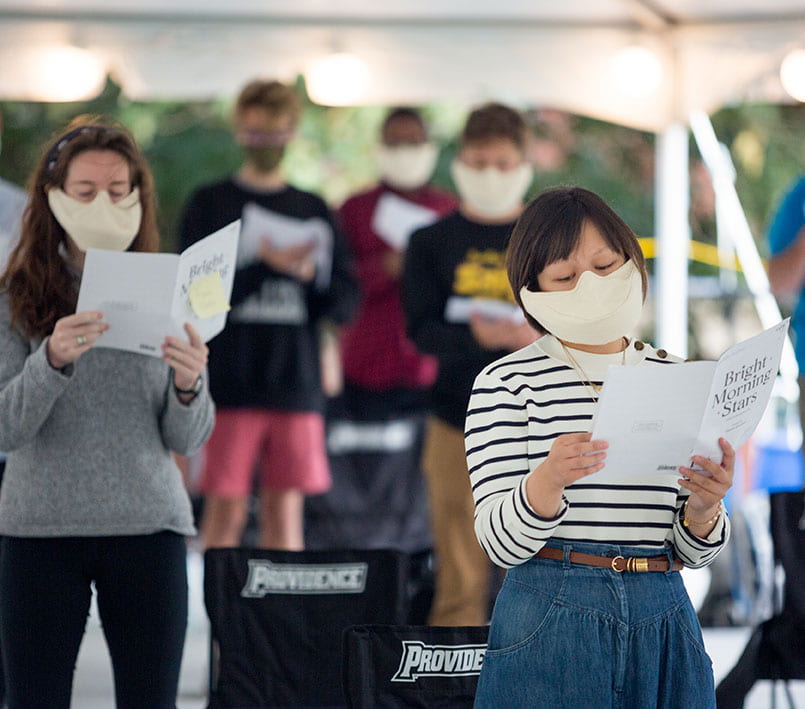Pandemic provides opportunity to amplify College’s outdoor learning spaces
By Charlotte Smith ’20 & ’21G
The coronavirus pandemic has forced the world of higher education to reconsider how physical campus spaces can be used to support student learning and reinforce the health and safety of the communities they serve. Providence College has undertaken this challenge by designating six outdoor learning spaces as locations for classes this fall. Two of the spaces feature new construction.

The move was partly in response to the State of Rhode Island’s request for colleges and universities to develop comprehensive reopening plans for the fall semester. Moreover, according to Charles J. Haberle, assistant vice president for academic facilities and technology planning, several faculty members had expressed an interest in teaching outdoors. Haberle, along with other members of the College’s academic affairs staff and the Continuity Task Force’s Classrooms – Social Distancing subgroup, determined that formally scheduling outdoor classes was a wise and viable option.

Over the past few years, the commitment to creating new and diverse learning spaces has been a priority at the College, noted Haberle. The two most recent facilities built, the Arthur F. and Patricia Ryan Center for Business Studies and the addition to the Providence College Science Complex, incorporated “active” learning spaces. Haberle noted that features of those buildings included flexible spaces where furniture can be easily moved, as well as technologies that allow students to work individually or to collaborate in groups.
The newly designated outdoor spaces for expanded teaching and learning resulting from the school’s response to COVID-19 are sprinkled around campus. They are located at the Smith Quad, Hunt-Cavanagh Hall lawn, McGlynn Sculpture Court, Martin Hall lawn, Hickey Hall Observation Deck, and Calabria Pavilion. The concrete pavilions at Smith Quad and Martin Hall are new.

Each location is equipped with protection from the elements, wireless access, lighting, and a table for instructor use. The College has provided each in-person undergraduate student with a PC-branded, lightweight chair that can be transported to and from outdoor classes.
The frequency with which instructors utilize these outdoor spaces varies. Some classes meet outdoors periodically, while others meet whenever the schedule calls for it.
“While some professors only taught outside on the first day of classes to meet their students in-person, others are meeting indoors or online once a week and outdoors once a week, while some classes are meeting fully outdoors until the end of the semester,” said Haberle.

Classes that have been scheduled outdoors range from Development of Western Civilization seminars to biology and several high-enrollment business classes. Having the opportunity to meet outdoors means entire classes that were otherwise not able to gather in one setting due to social distancing rules can now do so. This also results in lower density inside academic buildings, noted Haberle.
Public speaking classes have benefited from these outdoor spaces, as well as several art-oriented classes, including studio art and music appreciation. Music ensembles and vocalists also can be seen and heard rehearsing in these outdoor spaces during course times, as their usual indoor practice facilities have been compromised in some circumstances.

Certain locations, such as the McGlynn Sculpture Court and Hickey Observation Deck, maintain a smaller-scale social-distancing capacity, supporting 12 to 15 students. However, other locations, such as Calabria Pavilion, can serve up to 56 students under proper distancing.
According to Haberle, there has been an extremely positive response from both students and faculty to these learning spaces. Demand has exceeded capacity in certain time slots, with more than 100 requests by professors in various disciplines to utilize these spaces.
Haberle pointed out that instructors can take their classes outdoors anytime they wish, using any appropriate space on campus that fits the purpose. Whether it’s on Slavin lawn or the Anderson Stadium bleachers, the campus offers a variety of options for outdoor learning.
While Haberle stated that the College does not anticipate regularly holding outdoor classes in the spring semester, three of the current outdoor learning classrooms will have a future on the other side of the pandemic. Calabria Pavilion, located next to Schneider Arena, and the pavilions on Smith Quad and the Martin Hall lawn may continue to be used. These three locations also may be used for student orientation, alumni events, and other College events suitable for an outdoor venue.

The outdoor learning spaces have significantly enhanced campus life while remaining an important option for learning and teaching, emphasized Haberle.
“Not only does holding classes outside add to the campus environment, it has allowed for more personalized connections to be built between faculty and students. While these outdoor spaces may not take us through the end of the semester, if they could take us through half or more of the semester that would be ideal,” he said.
#givingtuesday at pc




